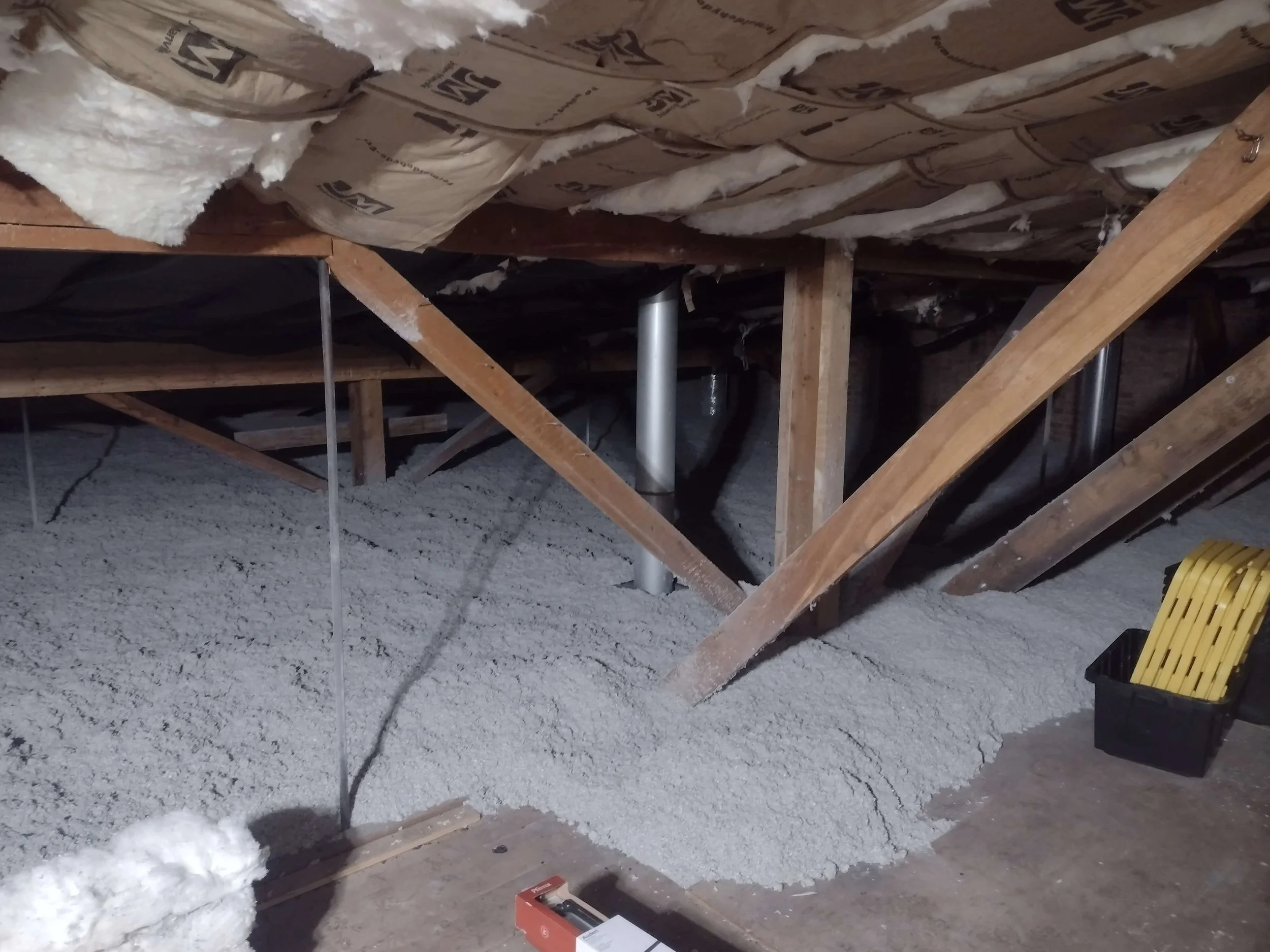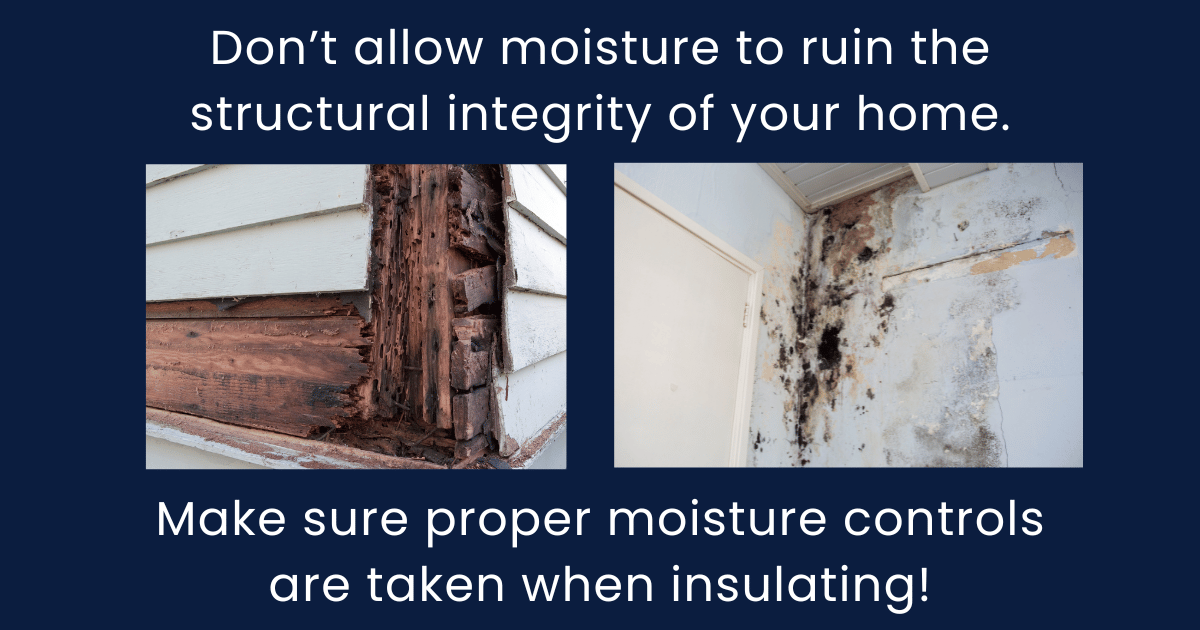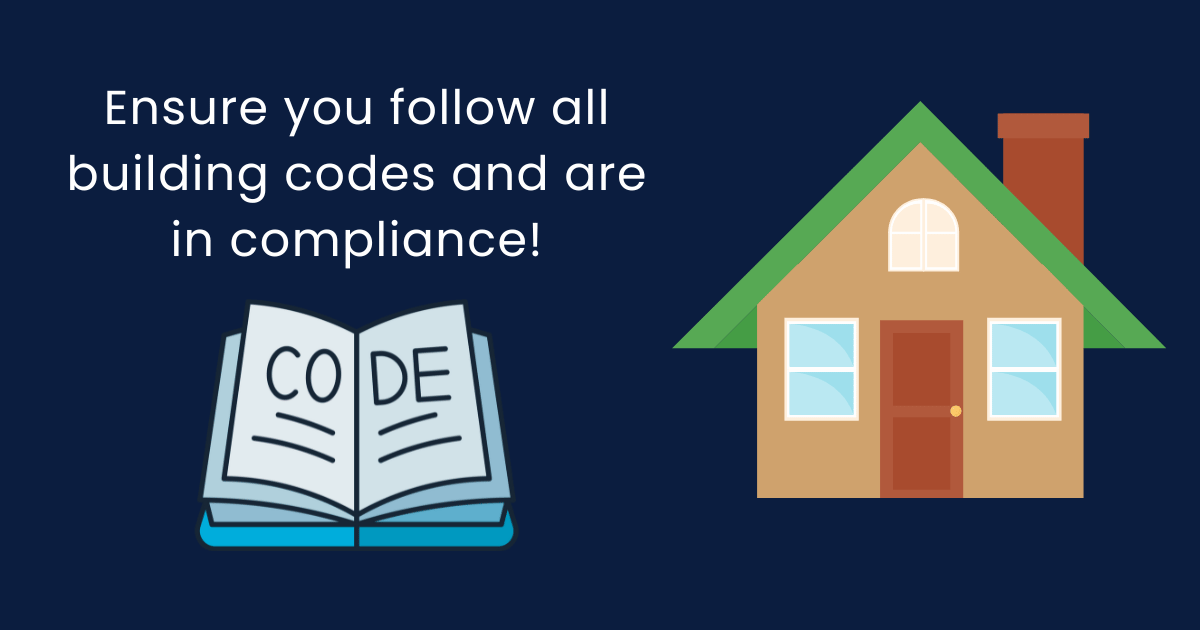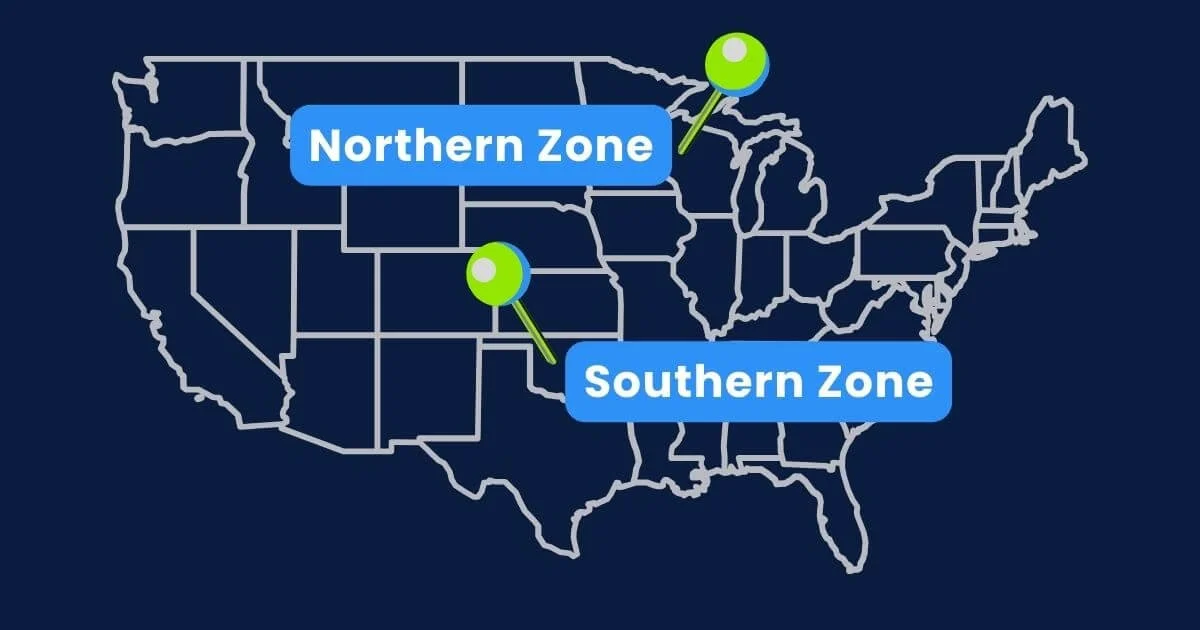Insulating Older Homes Without Removing Walls: Professional Techniques That Work
Got an old house that's bleeding energy through every wall, but the thought of tearing apart your beautiful plaster walls makes you want to cry? The good news is that insulating older homes without removing walls isn't just possible – it's become an art form thanks to modern specialized insulation techniques.
Let's explore how professional installers can transform your energy-hungry old house into a cozy, efficient home while keeping your walls intact and your sanity preserved.
Why Insulating Older Homes Without Removing Walls Makes Sense
Picture this: you love your old house's character – those gorgeous plaster walls, the vintage trim, maybe even some hand-painted details that took craftsmen weeks to complete. But every winter, you're basically heating the great outdoors while your energy bills look like mortgage payments.
Traditional renovation wisdom might tell you to gut everything and start fresh. But insulating older homes without removing walls offers a smarter path:
Preserves historic character and original architectural details
Saves thousands in demolition and restoration costs
Minimizes disruption to your daily life
Protects irreplaceable plaster work and vintage materials
Reduces project timeline from months to days
Your old house has survived decades (or centuries) with those walls intact. There's no reason to destroy them now when specialized insulation techniques can work around them.
Understanding Your Old House's Unique Challenges
Every old house is like a vintage puzzle – beautiful, but with pieces that don't quite fit modern expectations. When you're insulating older homes without removing walls, you're dealing with a building envelope that was designed when energy efficiency meant "close the door behind you."
Common Old House Wall Scenarios:
Your exterior walls might be hiding:
Zero existing insulation (because apparently our ancestors were part polar bear)
Plaster walls over wood lath that crumble if you sneeze too hard
Electrical wiring that snakes through wall cavities like a game of 3D Tetris
House walls with irregular stud spacing that laughs at modern standards
Mysterious voids where insulation should be but definitely isn't
The beauty of modern techniques for insulating older homes without removing walls is that they're designed to work with these quirks, not against them.
Professional Techniques for Insulating Older Homes Without Removing Walls
The Injection Method: Surgical Precision
Think of this as keyhole surgery for your house. Professional installers use specialized equipment to fill wall cavities through tiny holes that are barely noticeable when finished.
How the Injection Process Works:
Strategic hole placement - Usually in inconspicuous areas like between siding boards
Cavity assessment - Using specialized tools to understand wall construction
Controlled injection - Filling cavities with expanding foam or loose fill insulation
Seamless repair - Patching holes so expertly you'll forget they were ever there
This technique is perfect for insulating older homes without removing walls because it works around existing electrical wiring and preserves plaster walls completely intact.
Blown-In Insulation: The Gentle Giant
Blown-in techniques are like giving your walls a warm, fluffy hug from the inside. This method excels at insulating older homes without removing walls because it can navigate around obstacles that would stop traditional batt insulation cold.
Blown-In Advantages:
Flows around electrical wiring without creating gaps
Fills irregular cavities that don't follow modern standards
Settles into hard-to-reach areas that other methods miss
Maintains consistent R-value throughout the wall cavity
Popular Blown-In Materials:
Cellulose insulation - Made from recycled materials, great for old houses
Loose fill insulation - Adapts to any cavity shape
Mineral wool - Excellent fire resistance and moisture handling
Spray Foam Solutions: The Space-Age Answer
When you're insulating older homes without removing walls, spray foam insulation is like having a magic wand that can reach anywhere and seal everything.
Spray Foam Benefits:
Expanding foam fills every nook and cranny
Creates air sealing while insulating (two jobs in one!)
Closed cell spray foam adds structural strength to aging walls
Stops air leaks that traditional insulation can't address
Professional spray foam installation requires specialized equipment and training, but the results are game-changing for energy efficiency.
Working with Different Wall Types in Older Homes
Plaster Walls: Handle with Care
Plaster walls are like temperamental artists – beautiful but requiring special treatment. When insulating older homes without removing walls that have plaster, professionals use techniques that respect these delicate surfaces.
Plaster Wall Strategies:
Minimal penetration injection methods
Vibration-free installation techniques
Strategic access points through basement or attic areas
Pressure-controlled filling to prevent plaster cracking
Wood Siding and Vinyl Siding Access
Your existing siding becomes the gateway for insulating older homes without removing walls. Professional installers can work through:
Wood Siding Options:
Small holes drilled between boards
Access through areas that will be hidden by trim
Temporary siding removal for complex areas
Vinyl Siding Advantages:
Easier to temporarily remove and reinstall
More forgiving for access point creation
Often conceals injection points naturally
Foundation Walls: The Underground Challenge
Foundation walls present unique opportunities for insulating older homes without removing walls. These areas often have easier access points and can provide significant energy efficiency improvements.
Foundation Wall Approaches:
Interior spray foam application on exposed foundation walls
Rigid foam boards installed over existing foundation surfaces
Rim joist sealing to prevent major air leaks
Managing Air Leaks During Wall Insulation
One of the biggest advantages of insulating older homes without removing walls using modern techniques is the simultaneous air sealing that occurs. Your old house probably has more air leaks than a screen door, and addressing these is critical for energy efficiency.
Common Air Leak Locations:
Around electrical penetrations (every outlet and switch)
Where exterior walls meet foundation walls
Around windows and doors (the usual suspects)
At the building envelope transitions
Professional Air Sealing Methods:
Expanding foam for larger gaps and penetrations
Spray foam applications that seal while insulating
Strategic caulking in accessible areas
Pressure testing to verify seal effectiveness
Moisture Management: The Silent Success Factor
When insulating older homes without removing walls, moisture control becomes even more important. You can't see what's happening inside those wall cavities, so prevention is everything.
Moisture Control Strategies:
Vapor Barrier Considerations: Professional installers understand how to maintain proper moisture barriers when insulating older homes without removing walls. This might involve:
Strategic vapor barrier placement during injection processes
Moisture barriers in basement and crawl spaces
Proper ventilation to prevent excess humidity buildup
Preventing Problems:
Mold growth prevention through proper moisture management
Wood rot protection in vulnerable areas
Structural damage prevention through controlled moisture levels
Energy Efficiency Gains You Can Expect
When professionally insulating older homes without removing walls, the energy efficiency improvements can be dramatic. Your old house might currently have the insulation value of a cardboard box, so any improvement is significant.
Typical Energy Performance Improvements:
20-40% reduction in heating and cooling costs
Improved R-value from near zero to modern standards
Better thermal bridging control through continuous insulation
Reduced heat loss through previously uninsulated exterior walls
Comfort Improvements:
More consistent temperatures throughout the house
Fewer drafts and cold spots
Better indoor air quality
Reduced outside noise transmission
Cost-Effective Results
The beauty of insulating older homes without removing walls is that you get maximum impact for your investment:
Lower project costs compared to full wall renovation
Faster payback through immediate energy savings
Higher home value with minimal disruption
Long-term benefits that keep paying dividends
Professional Installation vs. DIY Approaches
While we've covered some DIY insulation projects in other contexts, insulating older homes without removing walls typically requires professional expertise. Here's why:
Why Professional Installation Matters:
Specialized Equipment:
Injection systems that require training and expensive equipment
Pressure monitoring to prevent wall damage
Thermal imaging to verify complete coverage
Technical Expertise:
Understanding electrical wiring configurations in old houses
Recognizing structural issues that could affect insulation
Proper moisture barrier and vapor barrier installation
Safety Considerations:
Working around older electrical systems safely
Handling insulation materials properly
Ensuring building code compliance
Addressing Specific Challenges in Older Homes
Electrical Wiring Integration
One of the trickiest aspects of insulating older homes without removing walls is working around existing electrical wiring. Old houses often have wiring that would make modern electricians weep.
Professional Solutions:
Careful cavity mapping before insulation installation
Fire-rated materials around electrical components
Strategic insulation placement that maintains safety clearances
Coordination with electrical upgrades when beneficial
Dealing with Settled or Damaged Areas
Old houses have character, including the kind that comes from decades of settling. When insulating older homes without removing walls, professionals know how to:
Work around structural irregularities that developed over time
Address previous water damage that may affect insulation choices
Handle areas with partial existing insulation that needs integration
Historic Preservation Considerations
If your old house has historic significance, insulating older homes without removing walls becomes even more important. Professional installers can:
Preserve original materials and architectural details
Meet preservation requirements while improving energy efficiency
Document the process for historic preservation compliance
Coordinate with preservation specialists when needed
Regional Considerations for Cold Climates
In cold climates, insulating older homes without removing walls requires special attention to winter performance and thermal management.
Cold Climate Priorities:
Winter and Heat Gain Management:
Attic insulation coordination to prevent ice dams
Thermal bridging reduction through strategic insulation placement
Air infiltration control to prevent heating system overwork
Adequate Insulation Levels: Cold climates require higher R-value targets:
Wall insulation should achieve R-13 to R-21 depending on zone
Continuous insulation helps break thermal bridges
Air sealing becomes even more critical for comfort
The Technology Behind Modern Wall Insulation
Today's techniques for insulating older homes without removing walls would seem like science fiction to the original builders. Modern technology makes the impossible routine.
Advanced Installation Equipment:
Computer-controlled injection systems that monitor pressure and flow
Thermal imaging that reveals exactly where insulation is needed
Moisture detection equipment that identifies problem areas before they become disasters
Air leakage testing that quantifies improvements
Smart Material Selection: Professional installers use advanced materials specifically designed for retrofit applications:
Low-expansion foams that won't damage plaster walls
Moisture-resistant formulations for challenging environments
Fire-rated options for areas around electrical systems
Timing Your Project for Maximum Success
When you're insulating older homes without removing walls, timing can make a big difference in both comfort and cost.
Best Times for Wall Insulation:
Fall preparation before heating season begins
Spring projects after winter damage assessment
Coordination with other renovations like siding or window replacement
Weather Considerations:
Dry conditions for optimal material performance
Moderate temperatures for installer comfort and material handling
Low humidity periods to prevent moisture issues during installation
Measuring Success: How to Know It Worked
After insulating older homes without removing walls, you want to see concrete proof of improvement. Professional installers can provide verification methods that show the work was successful.
Performance Verification:
Thermal imaging before and after comparisons
Blower door testing to measure air leakage reduction
Energy bill analysis over the first year
Comfort surveys documenting temperature consistency
Long-term Monitoring:
Annual inspections to verify insulation performance
Moisture monitoring in critical areas
Energy cost tracking to document ongoing savings
What to Expect During the Installation Process
Understanding the process of insulating older homes without removing walls helps set proper expectations and ensures smooth project completion.
Typical Project Timeline:
Day 1: Assessment and Preparation
Building envelope evaluation and planning
Access point identification and marking
Electrical wiring mapping and safety planning
Day 2-3: Installation
Cavity preparation and cleaning
Insulation installation using chosen method
Air sealing of penetrations and gaps
Day 4: Completion and Verification
Access point repair and finishing
Performance testing to verify results
Cleanup and final inspection
What You'll Experience:
Minimal disruption to daily routines
Clean work practices that protect your belongings
Professional communication throughout the process
Immediate comfort improvements in many cases
Cost Factors for Wall Insulation Projects
When budgeting for insulating older homes without removing walls, several factors affect the total investment.
Cost Variables:
Square footage of exterior walls to be insulated
Insulation material choice and R-value targets
Access difficulty and wall construction complexity
Additional air sealing requirements
Value Considerations:
Energy cost savings that begin immediately
Increased home value from efficiency improvements
Comfort improvements that enhance daily living
Long-term durability of professional installation
Financing Options: Many homeowners can take advantage of:
Energy efficiency rebates from utility companies
Tax credits for qualifying insulation improvements
Home improvement loans with favorable terms
PACE financing in participating areas
Future-Proofing Your Insulation Investment
When insulating older homes without removing walls, think beyond immediate needs to long-term performance and adaptability.
Technology Integration: Modern wall insulation can accommodate:
Smart home systems for energy monitoring
Future electrical upgrades with proper planning
Climate adaptation as weather patterns change
Maintenance Planning: Professional wall insulation requires minimal maintenance but benefits from:
Periodic performance checks to verify ongoing effectiveness
Moisture monitoring in vulnerable areas
Air sealing maintenance as houses continue to settle
Working with the Right Professionals
Success in insulating older homes without removing walls depends heavily on choosing experienced professionals who understand both modern techniques and old house challenges.
What to Look for in Contractors:
Specialized equipment for injection and blown-in techniques
Experience with older homes and their unique challenges
Proper licensing and insurance for your protection
References from similar projects in your area
Questions to Ask:
How do you handle electrical wiring encountered during installation?
What methods do you use to prevent plaster wall damage?
How do you verify complete cavity filling?
What warranties do you provide on materials and workmanship?
The Environmental Impact of Efficient Insulation
Insulating older homes without removing walls isn't just good for your comfort and wallet – it's an environmental win too.
Environmental Benefits:
Reduced energy consumption means lower carbon emissions
Preservation of existing materials reduces construction waste
Extended building life through improved performance
Resource efficiency through retrofit rather than replacement
Sustainable Material Options: Many insulation materials used for wall injection are environmentally friendly:
Cellulose insulation made from recycled paper products
Mineral wool from sustainable raw materials
Bio-based spray foams with reduced environmental impact
Your Path to a More Comfortable, Efficient Home
Insulating older homes without removing walls represents the perfect marriage of preservation and progress. You get to keep everything you love about your old house while dramatically improving its energy efficiency and comfort.
The specialized insulation techniques available today make it possible to transform your energy-hungry old house into a model of efficiency without sacrificing character or breaking the bank. Whether you're dealing with plaster walls, irregular framing, or complex electrical situations, professional installers have solutions that work.
Don't let another heating season pass with your hard-earned money flying out through uninsulated exterior walls. The technology exists to solve your comfort and efficiency problems while preserving everything that makes your old house special.
Modern techniques for insulating older homes without removing walls prove that you don't have to choose between character and comfort. With the right approach, materials, and professional expertise, your old house can deliver modern performance while maintaining its timeless appeal.
The investment in professional wall insulation pays dividends in comfort, energy savings, and peace of mind. Your old house has been keeping families comfortable for decades or centuries – now it's time to help it do that job even better for generations to come.







